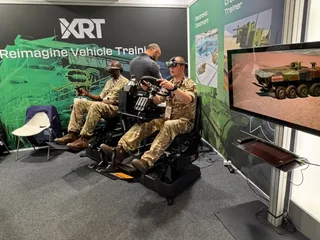UK Strategic Defence Review Signals Major Simulation Training Opportunities
Contact Our Team
For more information about how Halldale can add value to your marketing and promotional campaigns or to discuss event exhibitor and sponsorship opportunities, contact our team to find out more
The Americas -
holly.foster@halldale.com
Rest of World -
jeremy@halldale.com
%20(1).jpg/r%5Bwidth%5D=320/07409fc0-4120-11f0-962a-11ce757ad5b2-BEN-20250327-063-Puma%20Final%20Flight-5847%20(1)%20(1).webp)
Britain's Strategic Defence Review 2025 presents several potential opportunities for the simulation training industry as the UK Government delivered its plans for a technology-led military transformation across all defence sectors.
The review's emphasis on integrating artificial intelligence, drones, robotics, and digital warfare capabilities suggests immediate opportunities for simulation systems that could replicate complex operational environments safely and cost-effectively. The proposed CyberEM Command, planned for establishment by end-2025, might particularly benefit from simulation-based training given the inherent risks of live cyber warfare exercises.
With the review envisioning a "tech-enabled military power with integrated, adaptable, and digitally connected forces" by 2035, simulation platforms could prove essential for training personnel on AI-enhanced systems and multi-domain operations that would be challenging to replicate in traditional training scenarios.
The commitment to expand Active Reserves by 20% and Cadet Forces by 30% by 2030 could strain traditional training infrastructure, potentially making synthetic training environments an attractive scalability solution.
Other areas where simulation might play an expanded role include the rebuilding of Defence Medical Services, where high-fidelity medical simulation could bridge military and civilian healthcare training, and the revival of Strategic Reserve training for veterans, where simulation could offer cost-effective refresher training without complex logistics.
The £7 billion infrastructure investment earmarked for training facility modernisation could provide further opportunities, particularly as the review acknowledges that traditional approaches alone may not support the planned technological transformation.
Perhaps most significantly for the simulation sector, the review's emphasis on continuous adaptation suggests a training environment where platforms can be rapidly updated to reflect evolving threats and technologies - a natural fit for synthetic training solutions.
Read The Full Report

